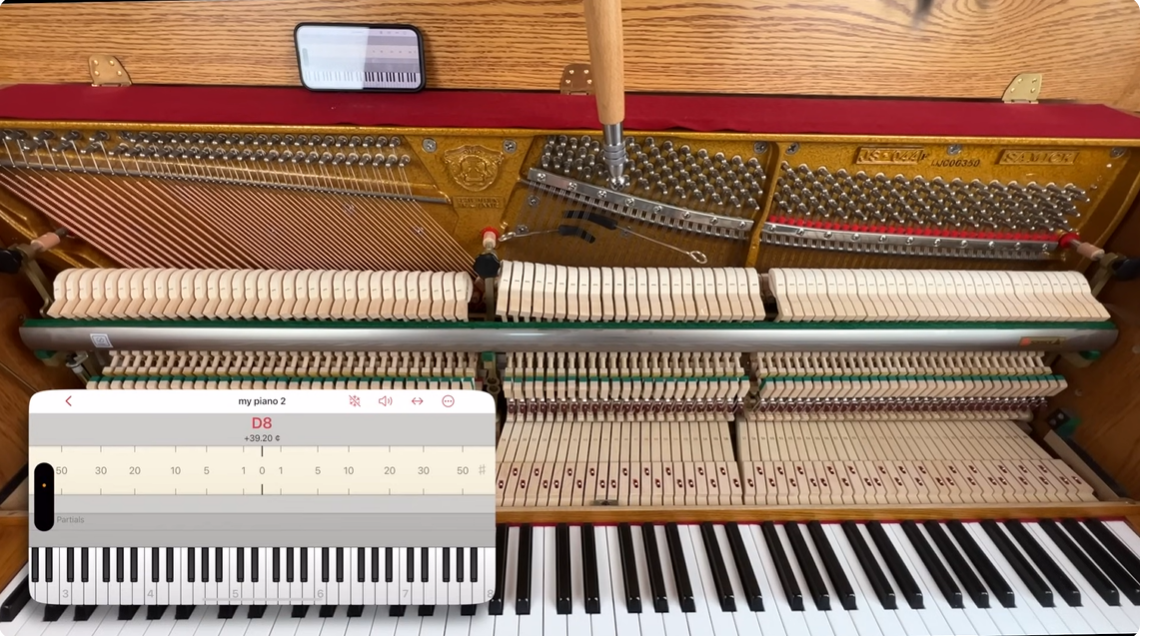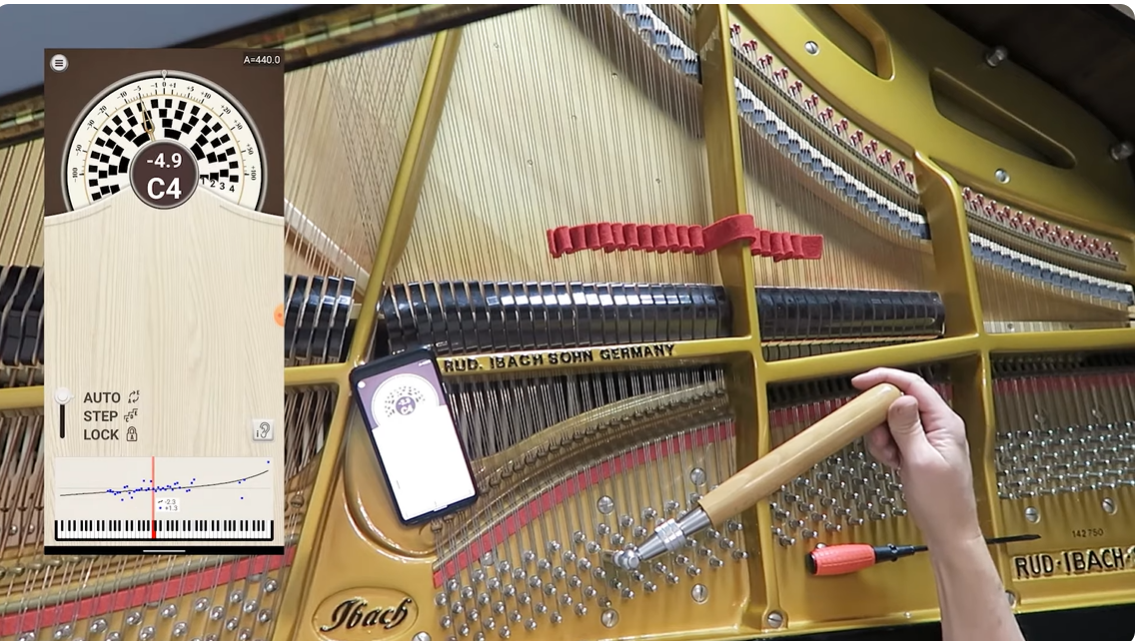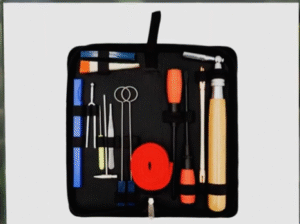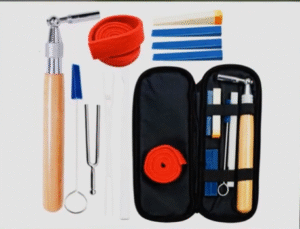Tuning a piano is essential if you want to take proper care of your instrument. While many piano owners understand that it’s “something you’re supposed to do,” few realize just why it’s so important. Regular tuning does much more than improve sound—it also protects your piano’s overall health and lifespan.
A piano naturally goes out of tune over time due to the way its strings behave. As the piano is played (and even when it’s not), the strings slowly stretch and shift. This movement alters the tension levels, creating imbalance across the frame and soundboard. Left unchecked, this uneven tension can lead to structural stress on the instrument.
Tuning your piano helps stabilize the string tension and extend the piano’s life. When you tune the piano, you’re not just correcting the pitch—you’re rebalancing the entire instrument. Equal string tension makes future tunings more effective, reduces wear on internal components, and helps maintain the instrument’s value over time.
Another key reason to tune your piano is to make it sound the way it should. An out-of-tune piano doesn’t just sound unpleasant—it can actually hurt your musical growth. Playing on an instrument that’s consistently off-pitch can confuse your ear, making it harder to develop accurate pitch recognition and musical sensitivity.
If you’re serious about music, playing on a well-tuned piano is non-negotiable. Accurate pitch is vital for proper practice and performance. Whether you’re a beginner or a seasoned pianist, having your instrument in tune helps you play confidently and hear the music the way it was meant to sound.

Acoustic pianos require regular tuning, while digital pianos do not. One of the perks of a digital piano is that it never needs to be tuned. Because it uses electronic sound samples instead of physical strings, pitch stability is built-in. But if you own an acoustic piano, expect to have it tuned at least once or twice a year to keep it in top shape.
Table of Contents
ToggleWhy Do Pianos Go Out of Tune?
Pianos are beautifully complex instruments, but they don’t always stay in perfect tune. Over time, you might notice your favorite notes starting to sound just a bit off. Why does this happen? The main culprits are changes in the environment, moving the piano, and excessive playing. Let’s break each of these down in simple terms.
Environmental Factors
The biggest reason a piano goes out of tune is because of changes in humidity and temperature. Pianos are largely made of wood, which naturally reacts to the moisture in the air. When the air becomes humid, the wood inside the piano expands, especially the soundboard. This pushes the strings tighter, which can make the pitch rise. On the flip side, dry conditions cause the wood to shrink, loosening the strings and lowering the pitch.
This means that your location plays a big role. If you live in a coastal area or a place with lots of seasonal changes, your piano is more likely to drift out of tune. On the other hand, in consistently dry climates, you may have fewer tuning issues. These shifts aren’t always noticeable day to day, but over time they add up. And since not every string shifts at the same rate, you’ll eventually hear that something sounds a little off.
Moving the Piano

Moving a piano—even just from one room to another—can throw its tuning out of balance. That’s why it’s usually a waste of time and money to have a piano tuned before a move. Once it’s relocated, it will likely need another tuning anyway.
Why does this happen? First, even small changes in the environment—like being closer to a heater or moving from a cooler to a warmer room—can affect the internal wood and string tension. But there’s also a physical factor. Pianos are heavy and full of delicate parts, and moving them can cause slight twisting or flexing of the frame. These subtle shifts might not be visible, but they’re enough to impact how the strings are stretched and held in place.
Pianos were never meant to be lugged around regularly. Their design favors stability, not mobility. So anytime they’re moved, even carefully, there’s a chance the tuning will suffer.
Over-Playing
While not as common as the other two reasons, excessive playing can still cause a piano to go out of tune—especially in environments like music schools or conservatories, where pianos are in near-constant use. When a piano is played for hours on end every day, especially at louder volumes, it puts extra stress on the internal parts.
This constant use can speed up the effects of humidity and wear on the strings and wood. Over time, even slight internal movements caused by vigorous playing can change the string tension. For most home pianists, this isn’t a major concern—playing your piano for a few hours each day won’t ruin the tuning. But in high-traffic locations, the tuning tends to drift much more quickly.
Can You Tune a Piano Yourself?
Technically, yes—you can tune a piano on your own. With the right tools (which you can easily find on Amazon), it’s possible to give it a go. But should you? Honestly, probably not. Piano tuning requires a delicate ear, specific skills, and a lot of patience. That said, if you’re determined to try it yourself despite the risks, I’ve gathered some recommended tools to help you get started.
Again,Should you try tuning your own piano? Honestly—absolutely not.
Piano tuning is a specialized skill. Believe it or not, professional piano tuners often go through formal training and certification to learn the craft. It’s not just about getting each note to sound right. Proper piano tuning involves a deep understanding of string tension, pitch stability, and mechanical nuance—things that only come with tuning hundreds or even thousands of pianos over time.
Here’s the reality: you might get a note to sound in tune temporarily, but as soon as you strike it hard, it can slip right back out. There are complex subtleties at play—many of which even I can’t fully explain—that distinguish a seasoned piano technician from someone with a tuning hammer trying to save a few bucks.
Consider this: every string has to be tensioned just right so that it not only sounds correct but also holds its pitch after being struck repeatedly. And that’s not just one string—we’re talking about doing this process over 200 times, since most keys are connected to two or three strings each.
So yes, in theory, you can tune your own piano. But should you? Definitely not.
How Much Does It Cost to Get a Piano Tuned?
Getting your piano tuned is usually a straightforward and affordable process. On average, you can expect to pay around $100 for a basic tuning. However, this price can vary depending on your location. For example, tuning services in larger cities often cost more than in smaller towns, but you’ll typically have more options to choose from in urban areas.
If your piano hasn’t been tuned in a long time, it might need additional maintenance beyond just tuning. Over time, pianos can require regulation, which involves adjusting the keys and internal action mechanism to ensure everything feels balanced and responsive. Another common service is voicing, which shapes the piano’s tone by adjusting the hammers—making the sound either brighter or warmer based on your preference.

These extra services can raise the cost significantly—sometimes by a few hundred dollars—especially if it’s been years since the last tune-up. In fact, a basic tuning might not be effective unless these other issues are addressed. That’s why it’s a good idea to have a qualified piano technician inspect your instrument first and provide a custom quote based on its condition.
How Often Should You Tune a Piano?
How frequently you need to tune your piano depends on several things, like how often it’s played, its age, and whether it’s been moved. As a general rule, most piano owners should aim to tune their instrument twice a year, or about every six months. This routine helps keep your piano sounding its best and prevents it from drifting too far out of tune.
For brand new pianos, tuning is needed more often. When a piano comes directly from the factory, it goes through a period of settling as it adjusts from a controlled environment to your home. During this time, the internal parts may shift slightly, affecting the tuning. Most manufacturers recommend tuning every three months during the first year. Some, like Yamaha, even offer a free first tuning voucher with new purchases.

If you’ve recently moved your piano, wait about a month before scheduling a tuning. This gives the instrument time to adjust to its new surroundings, especially if there’s a change in temperature or humidity. After that, you can safely get it tuned.
How Long Does a Piano Tuning Take?
For a piano that’s in good condition and regularly maintained, a standard tuning usually takes between one and one and a half hours. It’s a relatively quick process when everything is in order. However, if your piano has been neglected or is severely out of tune, the technician may need extra time to get it back into shape.
In more difficult cases, the tuning process can take several hours. If the technician also needs to perform regulation or voicing, this adds even more time. Both of these services are more in-depth and can each take a few hours on their own.
Occasionally, if the piano is very far out of tune, it might not be possible to complete the job in one session. The tuner may need to return after the piano has adjusted to the initial changes. This is rare, but it’s something to keep in mind if your piano hasn’t been tuned in a long while.
What Happens if a Piano Isn’t Tuned?
Skipping regular tunings can have serious consequences for your piano over time. First, it becomes harder to tune the longer you wait. The strings and internal parts settle into their incorrect positions, which makes it more difficult (and more expensive) to bring the piano back into proper tune.
Even worse, neglecting your piano can cause permanent damage. This could include issues with the strings, the soundboard, or other essential components. If the damage becomes severe enough, the resale value of the piano could drop significantly—which is bad news if you ever plan to sell it.
In short, spending around $100 every six months is a smart investment. Keeping your piano in tune is not just about sound quality—it’s about protecting your instrument. Regular maintenance saves you money in the long run by preventing bigger issues down the road.




